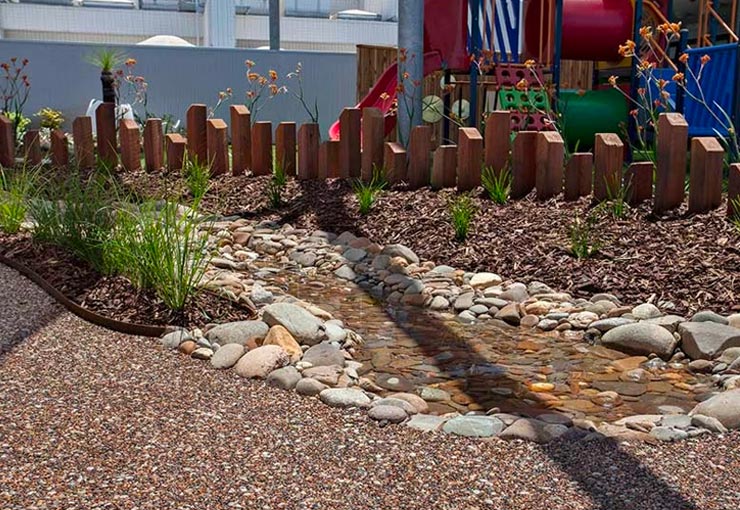If your home is your castle, your lawn should be your moat. After all, it’s the grassy expanse that surrounds your abode that provides the foundation for your castle’s defense, so it’s important this space be maintained properly and properly maintained. But often, homeowners cut corners in terms of lawn care, and this can often cause issues with edging—the grass-cutting parts on your lawn that run from the edge of your driveway up along the sidewalk to where the grass ends. They make the lines of your sidewalk and driveway (or lawn and path) nice and straight and help keep your lawn looking neat and clean. The problem is that edging can get expensive; there’s the heavy equipment you’ll need (like a riding lawn mower and edger attachment), the cutting blades, and the trimmers to regularly maintain it all. As such, investing in quality edging materials is always a good idea. To help get you started, we’ve compiled a list of the top five edging materials on the market today. They range from economical to high-end, making them suitable for many budgets, so let’s get started!
1) Bricks
Bricks are a great choice for edging because they are easy to use, easy to obtain, and offer a number of different options when it comes to style. The main disadvantage of using bricks as landscape edging is that they tend to be more expensive than most other materials. But if budget is not an issue, bricks can offer you an elegant, long-lasting solution to your edging needs. Bricks can be laid in several different patterns depending on your taste. They can also be painted if you are looking for something specific, such as pink bricks for a rose garden or blue bricks for an ocean theme. Further boasting its versatility and style, brick edging can be cut into curves or straight lines with ease and can even be used for raised flower beds and garden boxes. In essence, they are a complete package and an excellent choice for landscape edging.
2) Concrete Curbing
Want to try something unique, more permanent, and maintenance-free? Then concrete curbing may be right for you. Concrete curbing is becoming increasingly popular with homeowners because it offers clean lines and can be used in a variety of different ways to create beautiful borders around gardens, trees, driveways, and other areas of your yard. It also comes in many different styles and colors that can be customized to your home’s exterior or your personal taste. Concrete curbing can also be used to create “islands” in your lawn that are filled with trees or plants, as it can easily be molded into interesting curves or shapes.
3) Plastic
If set it and forget it is your motto, plastic edging is for you. Available in heights from 3 to 12 inches, plastic edging is rigid enough to define a clean border between a lawn and other landscape surfaces while flexible enough to let your creativity soar. It can also be used to separate grass from beds or walkways and can curve with the contours of your yard—all without digging a trench and installing heavy, bulky stone edgers. Unaffected by water, bugs, or extreme temperatures, it’s an attractive alternative to the metal edge and provides good weed protection against those pesky weeds that pop up in tight spaces. Just keep in mind that plastic edging doesn’t hold up well to weed whackers, which can damage the material’s edges and make them susceptible to breaking.
4) Aluminum or Galvanized Steel
Aluminum and galvanized steel are two of the most popular lawn edging materials out there. They’re relatively inexpensive, very durable, and capable of withstanding even the most extreme temperatures and weather conditions. Further, their aesthetic appeal is also undeniable—with aluminum edging being available in a wide variety of colors, materials, and finishes. Although durable and attractive, aluminum and galvanized steel are not suited to every situation. For one thing, they are not as flexible as plastic or concrete edging. This is why they don’t work well when you need to create curved borders or contour borders like those at the start of a garden bed.
5) Timber Sleepers
Give your landscape a touch of rustic appeal with timber sleepers. They offer a great way to bring texture and warmth to your garden, as well as being incredibly versatile for creating different types of landscape structures. Their natural appearance is perfect for creating pathways, retaining walls, and raised beds in natural-style gardens. If you’re looking for an edging material that’s eco-friendly, durable, low maintenance, and inexpensive, then timber sleepers are right up your alley!
Final Thoughts
In conclusion, these were the best edging materials for your lawn. If you are looking for the most durable material, then metal is the best choice. If you’re looking for a material that is affordable and easy to use, then plastic is the way to go. And if you really want something functional and beautiful, then brick and concrete are what you need. Hopefully, this article helped you to find the perfect edging material for your lawn!
